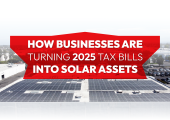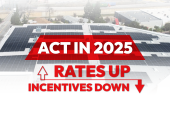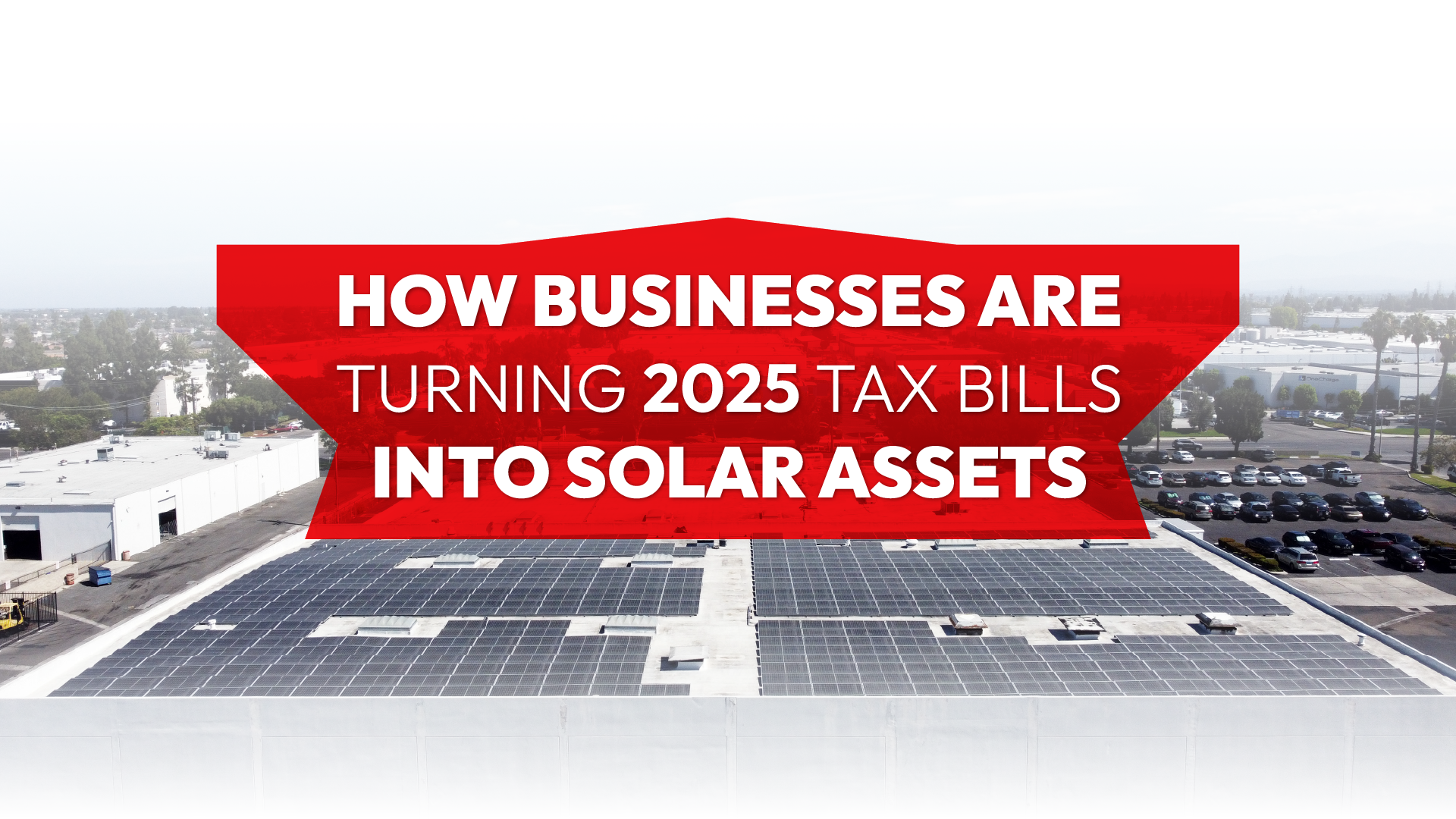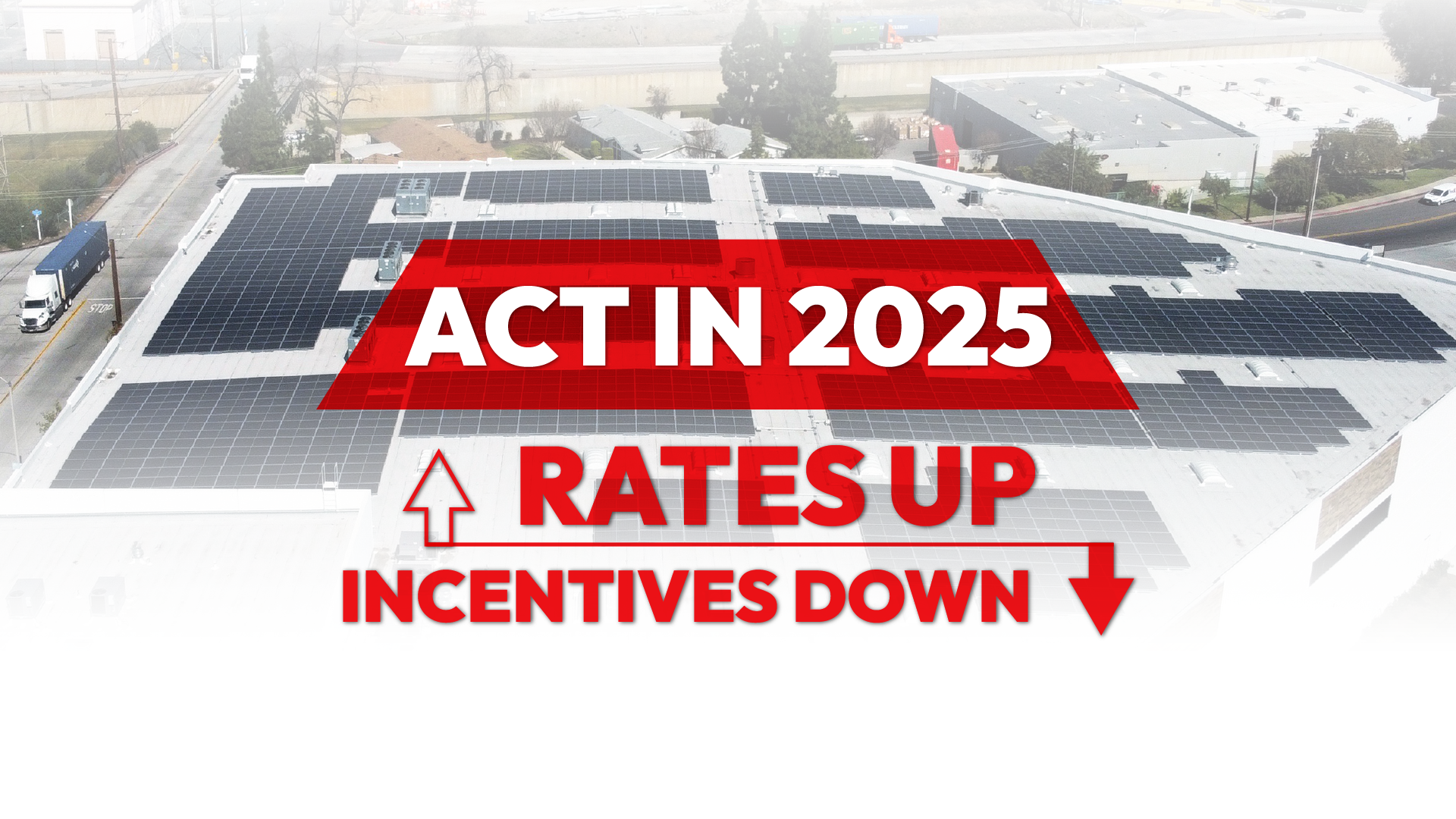Commercial Solar Requirements: Compliance & Installation Standards
In an era defined by climate change, energy volatility, and growing sustainability expectations, businesses across the United States are seeking smart ways to reduce costs, improve resilience, and transition toward a greener future. Commercial solar power has emerged as a leading solution, delivering both environmental and financial returns for companies across industrial, agricultural, and commercial sectors.
Yet despite the appeal, adopting solar energy involves more than just installing panels. Navigating the commercial solar requirements — including permitting, solar design, code compliance, and utility interconnection—can be complex. Without a thorough understanding of these elements, commercial property owners may face costly delays, legal issues, or inefficient systems that fail to meet long-term goals.
This guide will walk you through everything you need to know. From building codes and solar permit design to maximizing federal tax incentives, we’ll help you plan a fully compliant and high-performing solar energy project.
What Are Commercial Solar Requirements?
Before any panels are installed, commercial solar projects must satisfy a range of technical, legal, and procedural standards. These commercial solar requirements vary based on location but commonly include the following:
- Structural and Electrical Codes: Compliance with the National Electric Code (NEC) and the International Building Code (IBC) is essential. The IBC addresses installation methods of roof attachments in Section 1503, fire classifications for PV systems in relation to roofing material in Section 1509, and structural loading considerations in Section 3403.
- Solar Permit Design and Application Submission: A comprehensive permit package is required, including electrical diagrams, load calculations, structural assessments, roof layout, and anchoring details.
- Energy Efficiency Compliance: Businesses must demonstrate compliance with energy efficiency standards through either the Prescriptive or Performance method. The Prescriptive method sets fixed requirements for building components, while the Performance method allows for custom modeling to meet energy efficiency goals.
- Fire Safety and Accessibility: Adequate spacing for rooftop equipment is crucial to ensure fire safety and accessibility for emergency responders. Minimum distances are typically 3 feet from roof ridges and 18 inches from hip or valley lines.
- Proper Inverter Manufacturer Installation Standards: Following the manufacturer’s installation standards is vital for system performance and warranty compliance. Inverter manufacturers typically offer extended warranties beyond the 10–12 year industry standard.
- Regular Inspections and System Testing: Routine inspections ensure that the system operates safely and efficiently. Inspectors verify proper installation according to manufacturer specifications, including equipment sizing, grounding, and wiring.
- Full Documentation for Tax Filings: Comprehensive documentation of system components and warranties is necessary for tax filings and to claim available incentives.
- Coordination with Utility Companies: An interconnection request must be submitted to the utility company, including system capacity, installation location, and technical specifications.
Meeting these standards ensures your system is legally sound, safe, durable, and eligible for maximum solar incentives.

The Solar Installation Process: From Planning to Activation
Understanding the installation timeline and process is crucial to managing expectations and minimizing disruptions. A structured approach ensures that each phase—from planning through inspection—proceeds smoothly.
1. Site Evaluation and Energy Requirements
The first step involves a comprehensive assessment of your commercial building or site. During this stage, a professional solar installer will assess:
- Energy Usage History and Peak Demand Periods: Analyzing historical energy consumption helps determine the system size needed to meet demand.
- Available Roof or Land Space: Evaluating the space ensures sufficient area for panel installation.
- Load-Bearing Capacity for Solar Panels: Assessing structural integrity to support the weight of the solar system.
- Local Shade Patterns and Solar Exposure: Identifying potential shading issues that could affect system performance.
- Potential for Energy Storage Capacity or Back-Up Power Solutions: Considering battery storage options for energy independence.
This evaluation helps determine your energy needs and shape your system’s capacity for energy production and energy savings.
2. Customized Solar Design
Once your goals and constraints are clear, the solar company will develop a tailored solar design. Key design factors include:
- Optimal Panel Orientation and Tilt: Positioning panels for maximum sun exposure.
- Inverter Configuration Based on Interconnection Voltage: Selecting appropriate inverters to match system requirements.
- Placement of Rooftop Equipment: Strategically locating junction boxes, inverters, and safety shutoffs.
- Allowances for Annual Inspections and Access Points for Fire Departments: Ensuring compliance with safety regulations.
This stage ensures that your solar power system maximizes efficiency while remaining code-compliant and aesthetically integrated into your facility.
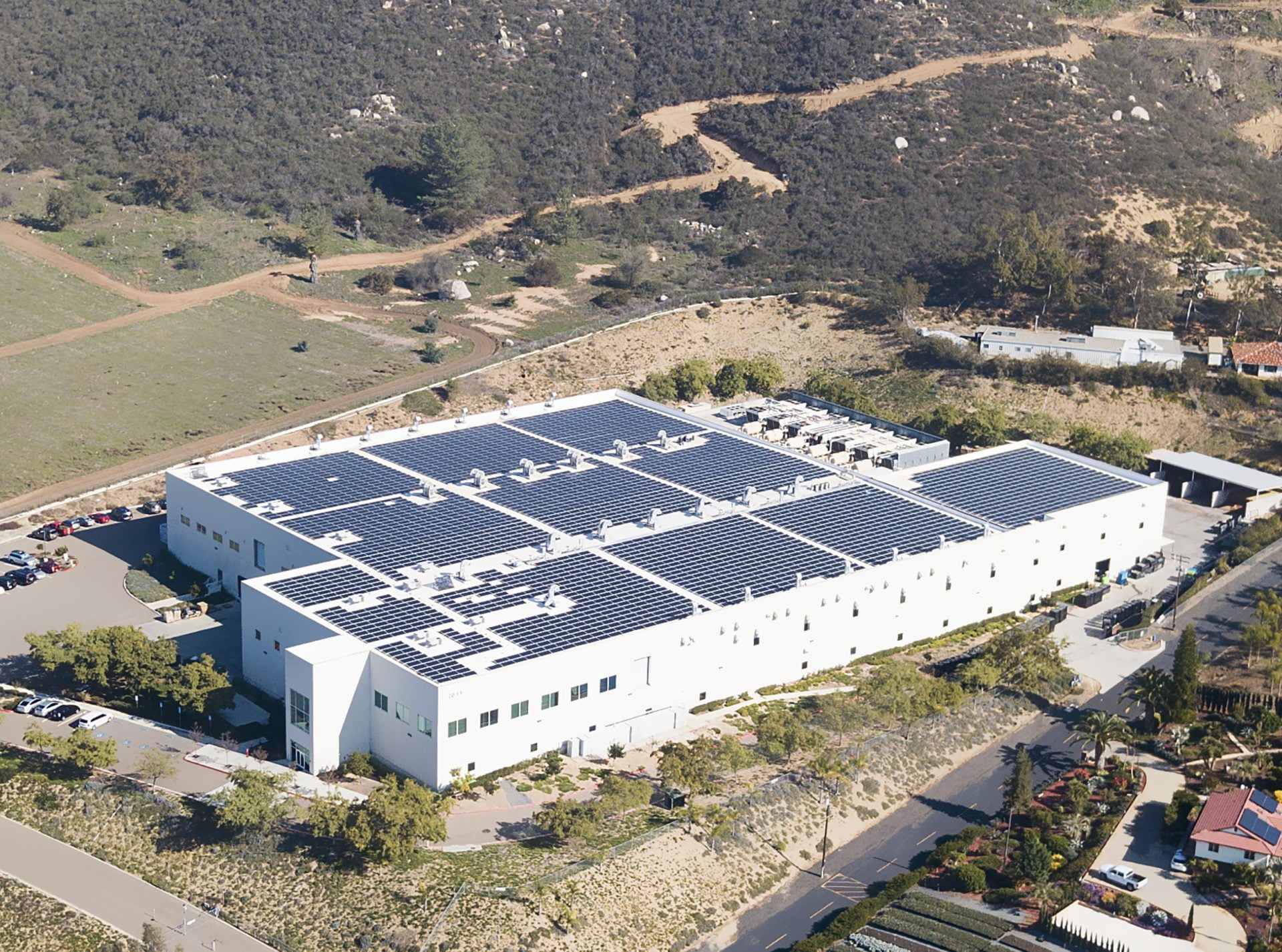
3. Permit Submission and Approvals
Before construction can begin, you’ll need to submit a solar permit design package to the local authority. This package typically contains:
- Electrical Diagrams
- Load Calculations
- Structural Assessments
- Roof Layout and Anchoring Details
- Interconnection Maps
Permits must often comply with energy standards using either the Prescriptive method (fixed requirements) or the Performance method (custom modeling). Local authorities may take anywhere from a few weeks to several months for review and approval.
4. Choosing Financing Options
Once your project is designed and approved, securing the right financing is essential. Businesses have access to several financing options:
- Solar Lease: Pay a fixed monthly fee for access to solar power without ownership.
- Solar Loan: Finance the initial investment while retaining ownership and full tax benefits.
- Power Purchase Agreements (PPAs): Purchase electricity at a fixed rate per kilowatt-hour.
- Direct Purchase: Pay upfront for the system and own it outright.
These options affect your long-term return on investment, operating costs, and tax planning.
5. Equipment Installation
With financing secured and permits approved, installation begins. Your chosen solar installation company will handle the process, including:
- High-efficiency solar panels
- Commercial-grade solar equipment
- Inverters and wiring
- Racking and ballast systems
- Optional storage installation for back-up power.
Experienced solar panel installers follow strict safety, code, and inverter manufacturer guidelines to ensure reliable and effective performance.
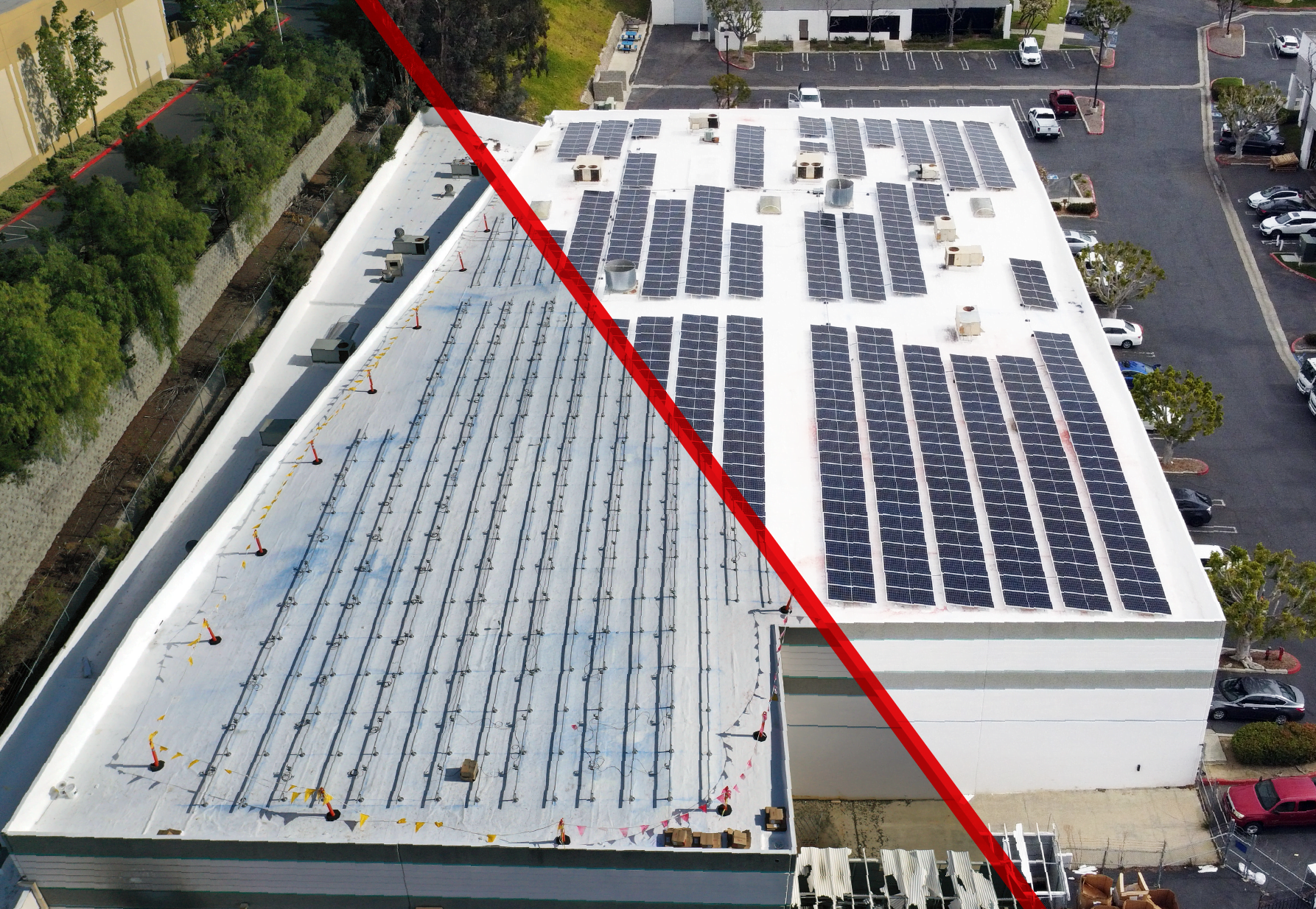
6. Inspection, Interconnection & Commissioning
Before your system can go live, it must pass regular inspections by the Authority Having Jurisdiction (AHJ). Simultaneously, your system must go through the interconnection procedure with the utility.
Final tasks include:
- Final structural and electrical checks
- Review of solar interconnection diagrams and inverter settings
- Confirmation of safe disconnection points
- Submission of an interconnection request process form with the utility.
Once these are completed, your system connects to the utility grid, delivering clean solar electricity to your facility—and often, sending excess energy back for credit through renewable energy certificates (RECs).
Financial Incentives & Tax Benefits
While the environmental impact of solar is a key driver, the financial upside is equally compelling. U.S. businesses can take advantage of powerful tax breaks and rebates to improve ROI.
Federal Incentives
- Federal Investment Tax Credit (ITC): 30% of the total system cost, including energy storage and labor, deducted from your annual tax return.
- Accelerated Depreciation: Under the Modified Accelerated Cost Recovery System (MACRS), businesses can depreciate the value of the solar system over five years, reducing taxable income. For example, a $1,000,000 system would allow for depreciation deductions totaling $850,000 after accounting for the ITC.
Additional Financial Benefits
- Reduced Property Taxes: Many states offer exemptions for solar installations, lowering property tax assessments. For instance, California provides a property tax exemption for the added value of solar systems, ensuring that property taxes do not increase due to the installation.
- State and Local Incentives: Rebates, cash-back programs, and zero-interest loans are available in various regions, as the Department of Energy’s Home Energy Rebates Program offers rebates for energy efficiency upgrades, which can be combined with solar installations to maximize savings.
- Lower Operating Costs: Businesses can significantly reduce energy bills over time by generating their own electricity through solar power. The Department of Energy reports that solar energy systems can save the average U.S. household about $1,400 annually on electricity bills.
- Increased Property Value: Solar installations can enhance property value and appeal to environmentally conscious tenants. A study found that homes with solar photovoltaic systems sold for 4.1% more on average than comparable homes without solar.
- Access to Renewable Energy Certificates (RECs): Businesses can generate and sell RECs for additional revenue. These certificates represent the environmental benefits of renewable energy generation and can be sold to utilities or other entities to meet renewable energy standards.
Together, these savings make solar a strategic asset for commercial property owners, rental properties, and even certain residential projects under business ownership.

The Environmental Case for Commercial Solar
Beyond dollars and cents, solar helps businesses reduce their carbon footprint, cut reliance on fossil fuels, and contribute to a sustainable future. Benefits include:
- Reduced carbon emissions
- Lower strain on the power grid
- Alignment with ESG (Environmental, Social, Governance) goals
- Cleaner branding for green energy initiatives
- Long-term resilience through clean energy independence.
In today’s market, environmental leadership isn’t optional—it’s expected. Commercial customers who invest in clean energy solutions demonstrate a commitment to innovation, responsibility, and long-term resilience.
How to Choose the Right Solar Provider
Even the best solar plan will fall short if it’s executed poorly. Selecting the right solar provider is critical for success.
When evaluating a service provider, look for:
- Experience with commercial panel systems and large-scale construction projects
- In-depth understanding of the installation process, permitting, and code compliance
- Ability to manage the solar service agreement and handle local utility paperwork
- Proactive support for the interconnection process
- Expert guidance on maximizing your solar investment and accessing all available tax credits.
At Revel Energy, we bring decades of experience delivering custom solar panel systems for industrial, commercial, and agricultural clients. From initial design to activation and ongoing maintenance, we help businesses reduce energy costs and achieve their sustainability goals.
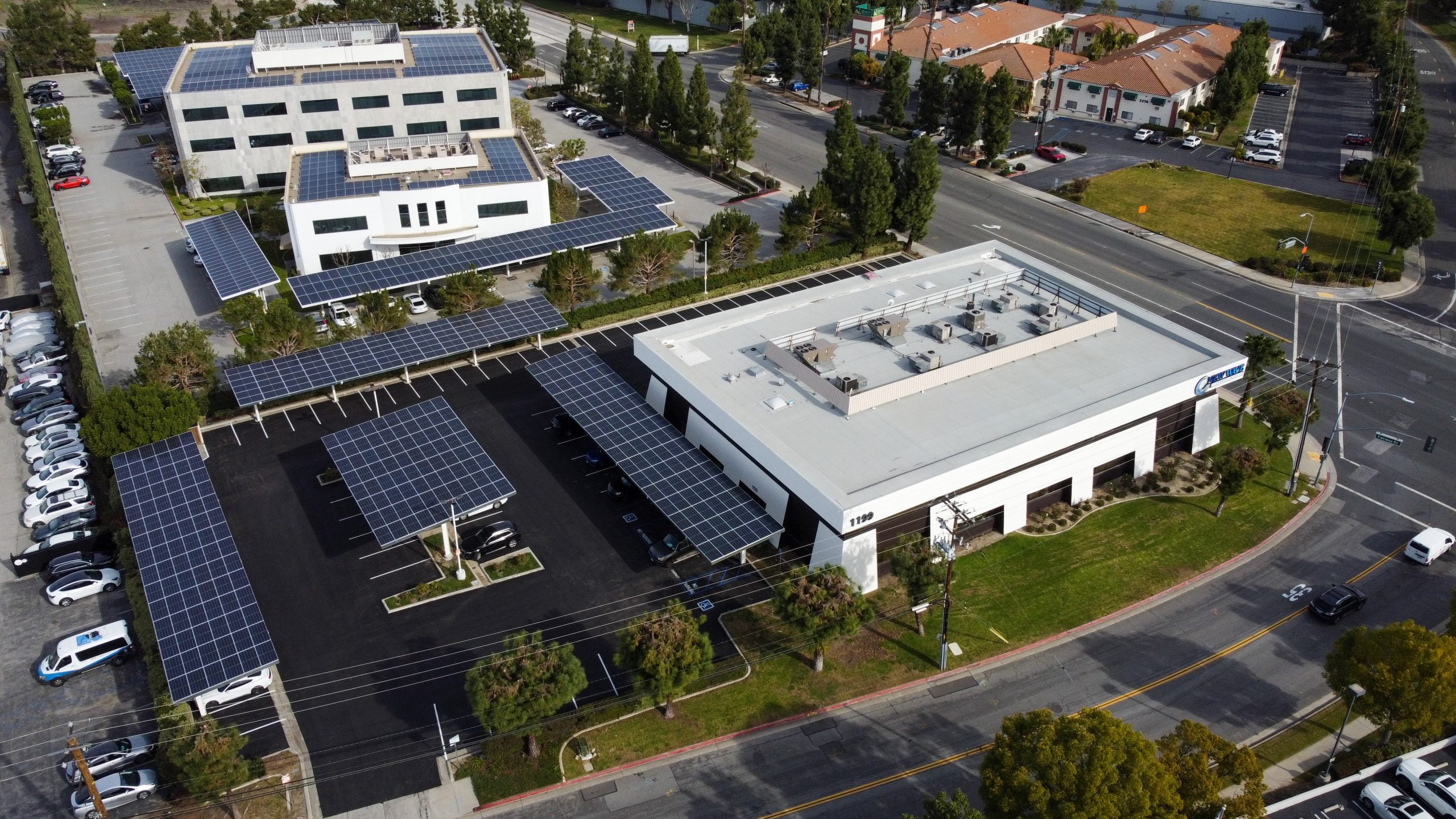
Final Thoughts: Building a Greener, Smarter Business
The journey toward commercial solar may involve multiple steps and compliance checkpoints, but the benefits far outweigh the complexity. Lower operating costs, enhanced property value, meaningful carbon footprint reductions, and eligibility for powerful tax incentives make solar a smart choice for businesses across the country.
With the right partner, however, the transition is seamless. That’s why we’re here to help you manage the solar permit design, coordinate the solar panel installations, guide your financing strategy, and ensure your system meets all commercial solar requirements.
Ready to unlock the benefits of solar for your business?
Contact us today to schedule your consultation and begin building a cleaner, more resilient energy future.
Frequently Asked Questions (FAQ)
Most commercial systems must follow the National Electrical Code (NEC), International Building Code (IBC), and local ordinances. Fire safety, rooftop equipment layout, and load-bearing limits are commonly reviewed.
The Prescriptive method uses fixed criteria like insulation values and system sizing, while the Performance method allows for customized modeling that meets energy targets in creative ways.
This involves the interconnection request process, which includes submitting system specs, completing interconnection procedures, and passing the final utility inspection.
Yes. Businesses can claim the federal investment tax credit (30%) on their annual tax return, and may also qualify for additional federal incentives or local programs.
Solar design depends on space, orientation, shading, and electrical load. Flat rooftops are ideal, and adding a storage installation can improve reliability and energy savings.
Yes. Commercial property owners with apartment buildings or rental properties can reduce energy bills and attract tenants seeking green energy solutions.
Annual inspections, cleaning, and software checks are recommended. Many solar installation companies offer maintenance packages or service agreements.
Payback varies by system size, solar incentives, and energy costs, but most commercial customers see full ROI in 5–7 years, with decades of long-term benefits thereafter.
Commercial grade rooftop solar is ideal for: manufacturing, warehousing, logistics, industrial, retail, hospitality buildings and more with over 10,000 sq. ft. rooftops.
CARPORT SOLAR
Free standing carport solar generates added solar power for properties with limited rooftop space. Added benefits include shading and protection for employees vehicles.
Crucial for reducing peak demand charges. Automated to supply electricity when your panels won’t. Energy storage is ideal for businesses that incur significant peak charges.
As the popularity of electric vehicles increase, so does the demand for on-site charging. This sustainable amenity has become a parking lot fixture for competitive employers.
OUR SERVICES
TURNKEY COMMERCIAL GRADE SOLAR, ENERGY STORAGE, LED LIGHTING AND MORE.
PROFESSIONAL GUIDANCE
CUSTOM TAILORED PLANNING
CONSTRUCTION & INSTALLATION
CSLB #1106092
Client Testimonial: Kelemen Company
Corporate Business Park in Irvine, CA has created significant electricity cost savings through commercial solar installed across the 5-building business park.
Client Testimonial: Tice Gardner & Fujimoto LLP
See how this CPA firm saved on electricity and gained valuable tax credits through commercial solar that they used to keep cash in the businesses.


